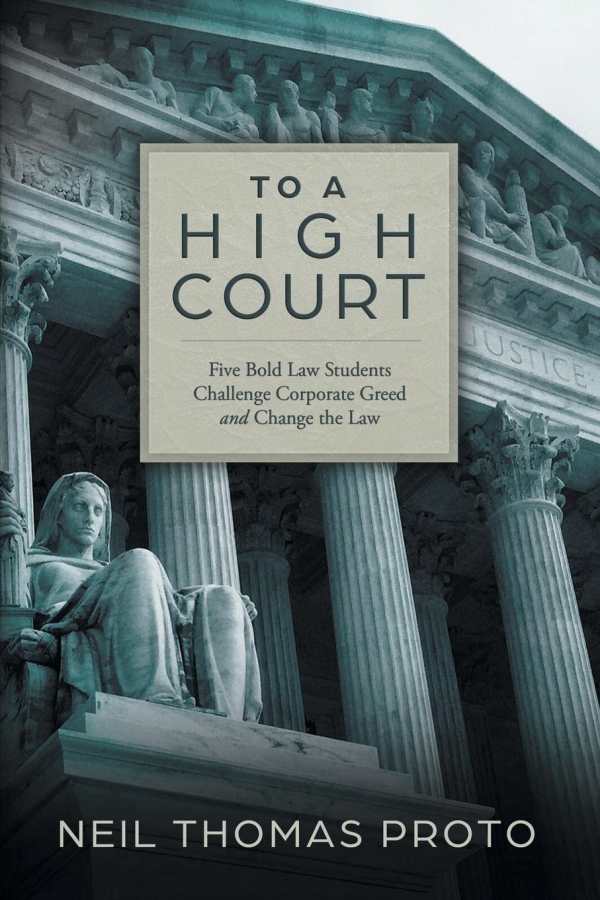To a High Court
Five Bold Law Students Challenge Corporate Greed and Change the Law
The story of ordinary citizens who petitioned the Supreme Court to gain the right to sue formidable entities, To a High Court is a memoir about a historic, power-shifting legal quest.
Neil Thomas Proto’s memoir To a High Court covers a student project that became a landmark case heard by the United States Supreme Court.
Proto, a lawyer and teacher, was one of a group of Washington, DC, law students in the early 1970s who questioned the failure of the Interstate Commerce Commission (ICC) to prepare an environmental impact statement when it granted a rate increase for freight railroads. Naming themselves Students Challenging Regulatory Agency Procedures (SCRAP), their one-semester class project uncovered corrupting relationships between the ICC, the rail industry, and the coal industry. It also led to a pivotal Supreme Court case that established citizen rights (called “standing”) to sue for enforcement of laws.
The case, United States v. SCRAP, continued to impact US laws in the decades following. Proto makes use of extensive interviews and research to honor that solemn legacy. The students’ initial research into regulatory procedures is reproduced here, as well as their personal accounts of engaging in outdoor recreation in nearby regions (relevant to the issue of standing). The ICC’s reduced rates for the rail, coal, iron ore, and timber industries made it more profitable to exploit natural resources and to encourage the dumping of byproducts than to recycle them, and the students argued this would damage the environment and reduce their enjoyment of the region.
Written in straightforward yet varied prose, the book captures the students’ sense of urgency at various points in the litigation with short, punchy sentences. Their reconstructed conversations are used to demonstrate the challenges they faced and to explain legal and factual issues with clarity. They predicted possible roadblocks and developed strategies to meet them; they made sure to understand the steps of the legal proceedings and to communicate their personal investment in the case, including worries that they would not succeed. And portions of their oral argument before the Supreme Court, including questions asked by the justices, result in a sense of immediacy in the final chapter of the book. In the book’s more descriptive passages, the pace slows to allow for moments of contemplation or understanding, as with depictions of the “saddened lives and degraded land” left behind as the railroads carried off the products and byproducts of coal mining. The threatening atmosphere of labyrinthine bureaucratic offices, guarded by portraits of powerful men, is also conveyed.
Notes from the papers of the Supreme Court justices who decided the case are now public, and some of these are included in the book’s epilogue, illustrating the justices’ decision-making processes. The original court filings are also included in an appendix. The result is a book that stands to inspire contemporary generations of “students with imperatives that matter to them” by outlining history in the making.
A hopeful story of how a group of young people won a Supreme Court case, empowering later generations of citizen activists, To a High Court is a compelling memoir.
Reviewed by
Michele Sharpe
Disclosure: This article is not an endorsement, but a review. The publisher of this book provided free copies of the book and paid a small fee to have their book reviewed by a professional reviewer. Foreword Reviews and Clarion Reviews make no guarantee that the publisher will receive a positive review. Foreword Magazine, Inc. is disclosing this in accordance with the Federal Trade Commission’s 16 CFR, Part 255.

